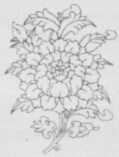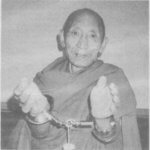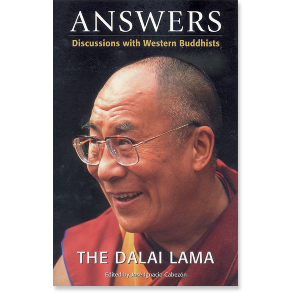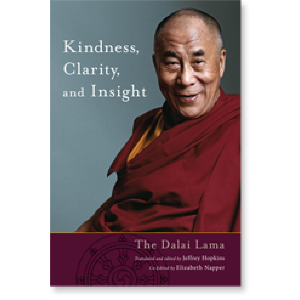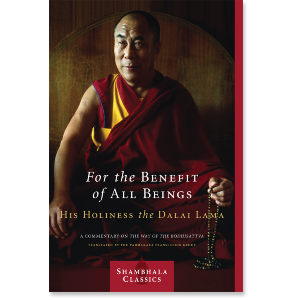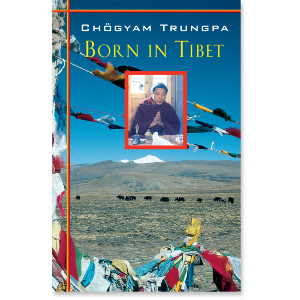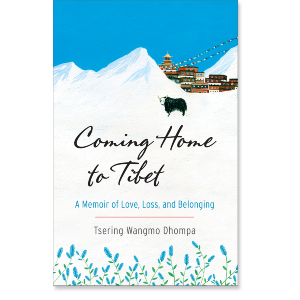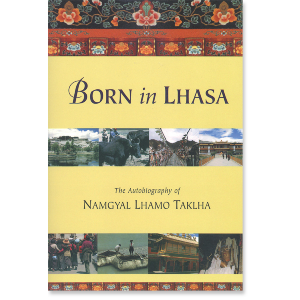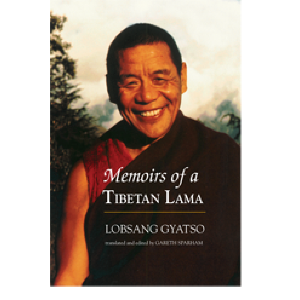| The following article is from the Autumn, 1996 issue of the Snow Lion Newsletter and is for historical reference only. You can see this in context of the original newsletter here. |
A Bodhisattva's Ordeal:
An interview with Ven. Palden Gyatso,
Tibet's longest-held political prisoner
by Victoria Huckenpahter
in Chinese-run prisons where. . . pain is a constant companion.
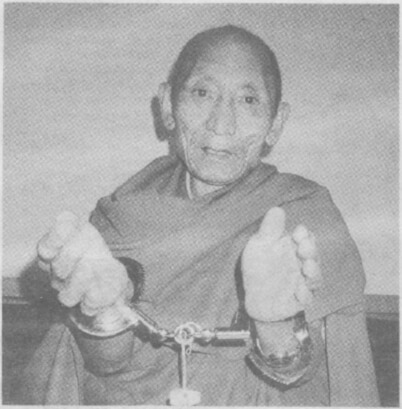
Palden Gyatso (1933-2018), Tibetan Buddhist monk.
His voice is low but firm, his body slender, but wiry. Four years after his escape from Tibet, nothing in Ven. Palden Gyatso's outer appearance betrays the fact that he spent the previous 33 years in Chinese-run prisons where, in his words, pain is a constant companion.
That he has survived and can now tour the world pleading for Tibet's freedom testifies to the power inherent in the Buddha's teachings, and to the stability of Palden Gyatso's own practice, which began at an early age.
Ven. Palden Gyatso:
"I was born in the Panam district in southern Tibet (Tsang Province),"
he recounts during a recent trip to the east coast following his participation in a 300-mile freedom march beginning at the Chinese embassy in Washington, DC, and ending at the United Nations in New York.
"My parents were strong practitioners. They owned a complete set of the Kangyur texts.
"At the age of 10, according to my wish and theirs, I took vows from the Abbot of Gadong Monastery, Khenpo KunsangThonden. Gadong, affiliated with Drepung-Loseling, is one of Tibet's oldest monasteries, having been founded by Khacho Panchen Sakya Shri before the 11th century. Housing close to 400 monks, it offered training in all the tantric practices, plus a school for dialectics.
"I remained there until I was 17,"
Palden Gyatso continues,
"studying basic religious doctrine and learning to create sand mandalas and tormas and to play traditional instruments. Then I decided to go to Lhasa to continue my studies. Because my parents didn't want me to go so far from home, I had to run away. I eventually joined the Drepung Loseling monastery. There, Palden Gyatso studied with Kunu Geshe Rigdzin Tenpa, a lama so highly realized that even the Dalai Lama took teachings from him.
-Ven. Palden Gyatso
The Cultural Revolution
It was Palden Gyatso's intention to remain indefinitely at Drepung, but the Cultural Revolution intervened.
When the safety of Kunu Lama was threatened in 1959, Palden Gyatso took the 73-year-old teacher to Tsang province, carrying him on his back the length of the route. From there, Kunu Lama obtained permission from Chinese authorities to return to India, his birthplace, where he eventually died at the age of 96.
Meanwhile, Palden Gyatso was arrested on the grounds that he was a reactionary element, and sentenced to a 7-year term at the Panam District prison. There, he endured forced labor 9 or more hours a day, tilling the prison fields yoked to a plow like an ox. On days when he was too exhausted to pull the plow, he was kicked and beaten for insubordination.
In summer, he and fellow prisoners were chained to the ceiling, a fire built beneath them, while in winter they were doused with freezing water.
Malnutrition was so extreme that besides eating mice, worms and grass, Palden Gyatso was reduced to chewing his own leather shoes.
Through it all, spiritual practice sustained him.
"I am not a learned Buddhist scholar, he states, and during my years in prison I was not allowed to engage in formal practice. But I had the background knowledge and I practiced from within.
"I would meditate on karma and on refuge, praying especially to my two lamas (Khenpo Kunsang Thonden and Kunu Lama) and to Kundun (HH the Dalai Lama). They were my refuge and inspiration.
Khenchen Jampel Sangpo
He was also inspired by the example of Khenchen Jampel Sangpo, the root lama of HH the Sakya Trizin, who was imprisoned in the same cell block.
The Chinese prison guards turned the Sakya prison community upside down. Prisoners were not allowed to show respect to the lamas, or use their proper titles. They would shout disrespectfully at Khenchen Sangpo, but he would always respond gracefully.
Eventually, Khenchen Sangpo died in Drapchi prison of an ailment which began in one leg and soon spread uncontrollably, as authorities continued to send him to a construction brigade instead of to a hospital.
Nyethang Labor Camp
In 1962, Palden Gyatso managed to escape prison, but he was caught near the Indo-Tibetan border, his term increased to 15 years during part of which both his hands and feet were shackled around the clock. Upon release, he was not allowed to return home, but was sent to Nyethang labor camp, 15 miles west of Lhasa.
Where a lesser person would have put his own safety uppermost, Palden Gyatso concluded:
"If I don't use my many years of suffering to help bring liberation for Tibet and all sentient beings, I will continue to face indefinite pain."
Convinced that he would serve his purpose only if he fought to regain Tibet's rights, he stole out of the labor camp one night in 1979 and walked to Lhasa's School of Medicine, where he covered over excerpts of Mao's speeches posted on a wall with his own signs calling for Tibetan independence. When the Chinese found out, they were very angry.
"Normally, I would have been executed immediately, but it happened that at that time the Dalai Lama's first delegation to Tibet, headed by his brother Lobsang Samten, had just arrived. So for appearances I was allowed to escape."
Surviving Torture Using Tonglen
Retribution came in 1983, however, when Palden Gyatso was re-arrested and taken to Sangyip prison, from which he was later transferred to Drapchi.
"During these years the continual torture reached a crescendo surpassing imagination. I had boiling water poured on me by a guard because he didn't like my attitude; no medical treatment was given to me afterward. Another guard jabbed me all over, including in my mouth, with an electric cattle prod. When I regained consciousness, most of my teeth were gone."
It was then that Palden Gyatso understood the true value of the Tonglen (taking and sending) practice he had been taught in his monastery days. I would meditate on Tonglen when they gave me electric shocks.
"Normally, the body is gripped by convulsions, but I often felt the electricity as just something cold. This is how I survived by putting more energy into my interior practice, and transforming negativity into benefit."
In 1992, Palden Gyatso was released from Drapchi prison, escaping to India exactly 13 days later. Before leaving, he bribed an official to steal the kinds of torture instruments which had been used on him so he could present them to the Dalai Lama.
"Long before I left Tibet, His Holiness knew of me. In 1982, a signed photo of him with the message, 'As a source of inspiration and prayers,' was sent to my family. But I was in prison at the time, so my family kept it until I was released."
Today, Palden Gyatso cherishes this photo, alongside one of Kunu Lama that had been willed to him and relayed through Serkong Rinpoche, as among his most precious possessions.
"Six days after arriving in India, Palden Gyatso, along with several other Tibetans, had an audience with the Dalai Lama. I thought I was dreaming," Palden Gyatso recalls.
"For one thing, Kundun looked much older than when he had left Tibet. He asked others in our group fairly mundane questions, but I was told afterward that he asked me many details. I honestly don't remember because at the time I was so overwhelmed, I could only sob."
Today, Palden Gyatso is a busy man. In Dharamsala, where he is based, he is constantly interviewed by journalists and extended speaking invitations by local schools.
Globally, he has realized the dream which, along with his spiritual practice, kept him alive: since 1992, he has testified to the truth of Chinese atrocity as he lived it before the British House of Commons, the UN Commission on Human Rights, and the House of Representatives International Relations Committee.
He is also writing a book of his life experiences.
"My practice has been strengthened, but not in a formal way, he concedes. I am not able to do much practice as such because wherever I go I am asked to speak. But I don't see much point to strengthening my formal practice until we get political freedom, because in Tibet the flourishing of Buddhism in its pure form is dependent on political stability.
"I served the longest term of any Tibetan political prisoner. Many who served around 20 years were being released just as I was returning! So I know first-hand that unless you have political freedom, you cannot pursue your practice.
"In my travels I have observed that Buddhism is increasingly popular in the West, but some people shy away from the political aspect. This is wrong. The essence of Mahayana is to help all sentient beings. And I am informed that in the Christian tradition it is said, "that if you help others, God helps you."
"The different religions are different paths, but they all lead to the same objective: helping others.
"Amnesty International, which works toward the alleviation of suffering, doesn't call its work Dharma, but their mission is in fact religious. Bear this in mind."
I would meditate on tong len when they gave me electric shocks. Normally, the body is gripped by convulsions, but I often felt the electricity as just something cold. This is how I survived-by putting more energy into my interior practice and transforming negativity into benefit.
Though Palden Gyatso is one-pointedly focused on enlightening the West about the plight of his country, he is, miraculously, not a bitter man.
"I am not angry with the Chinese," he has said repeatedly, "but the truth must be told."
During a ride to testify before the House of Representatives, he was accompanied by an American woman who has herself been active in the cause of Tibet's freedom. Confronted by the reality of his presence and all it implied, she began to weep.
Then, she later recounted,
"he started to stroke my hand as if to comfort me!"
His mute gesture attested that the Dharma had not only enabled Palden Gyatso to survive the hell realms, but to do so with compassion.
